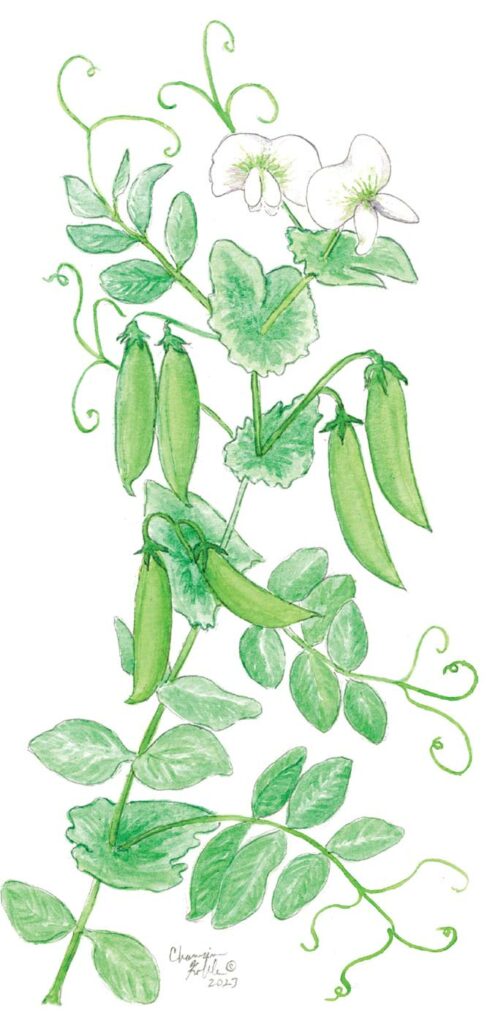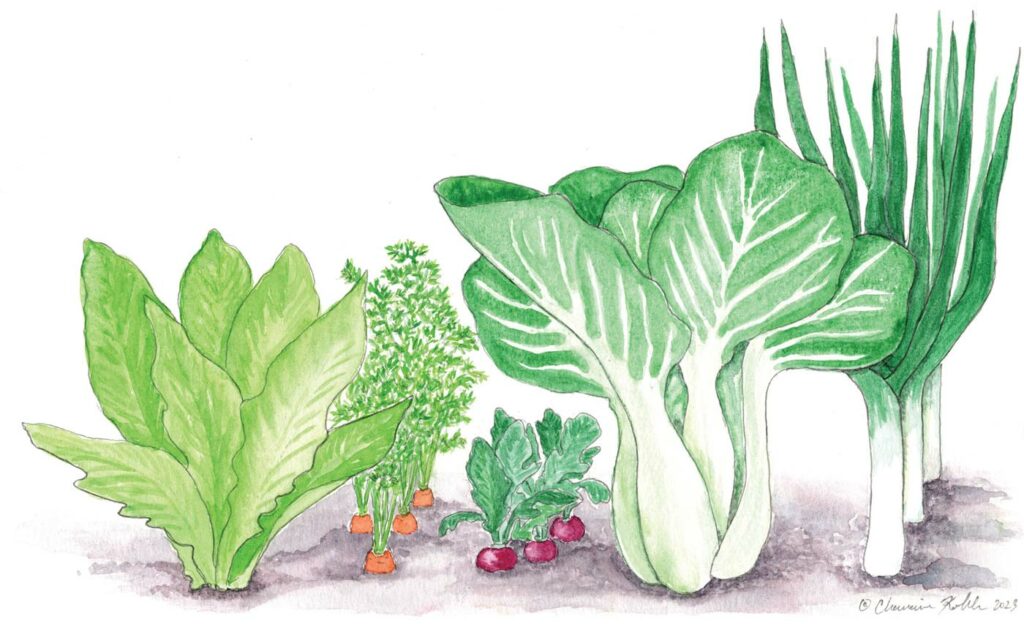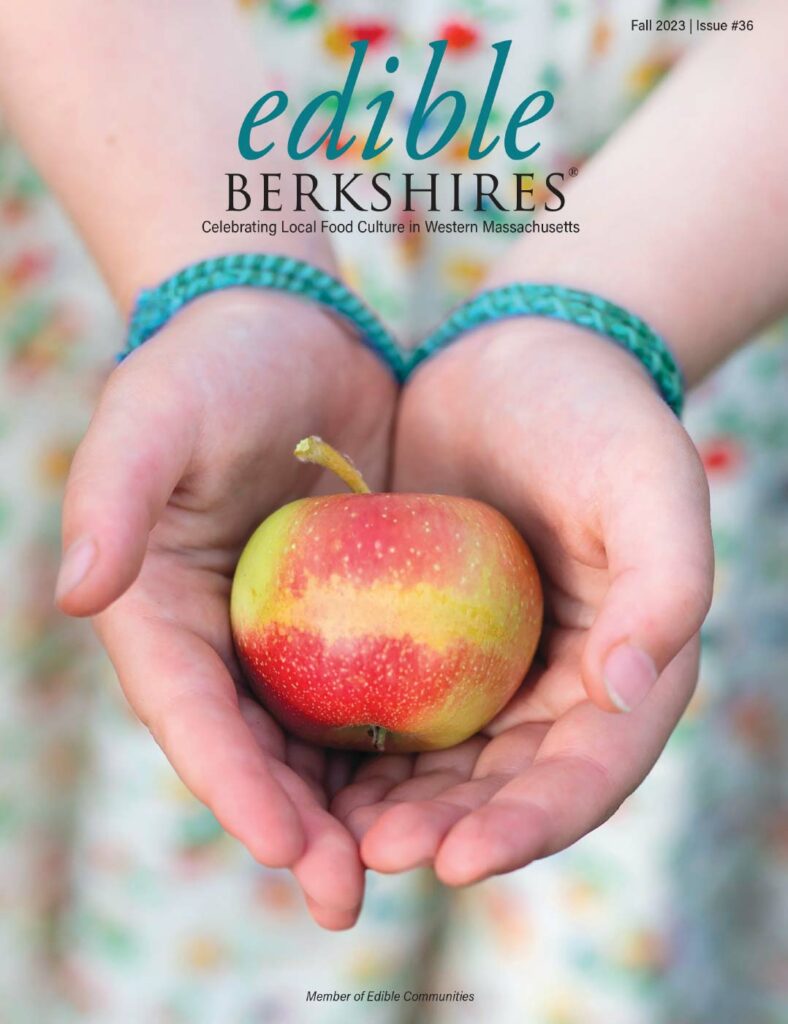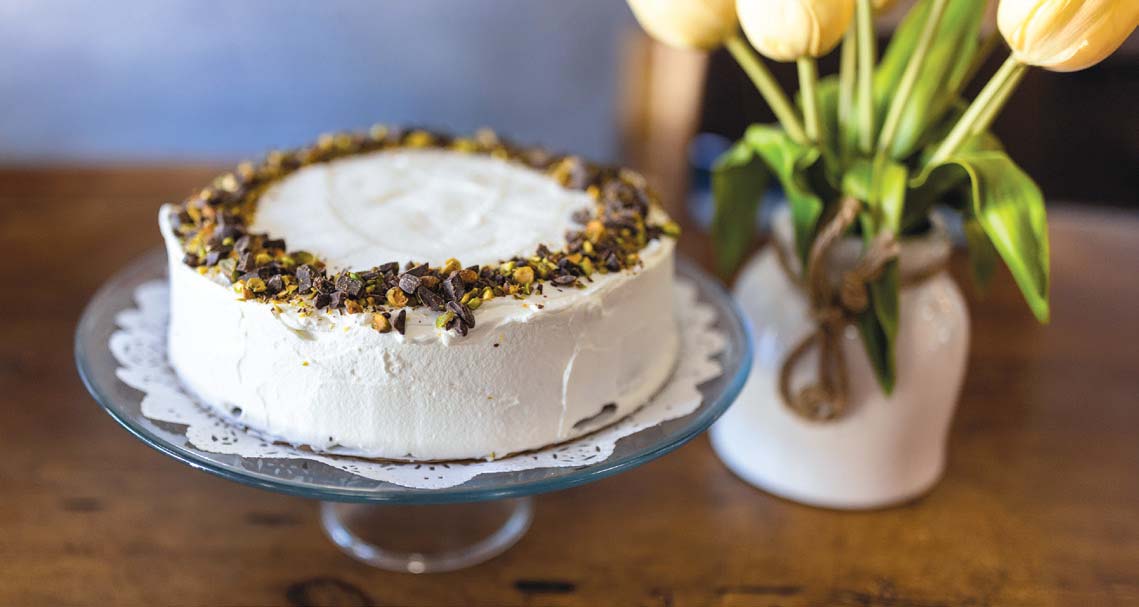Great (and economically minded) gardeners, don’t stop planting, they continue to sow crops that will extend their season as long as possible. And for those who didn’t get around to planting in the spring, it is never too late to plant out a garden plot to provide vegetables in the months ahead.
ILLUSTRATIONS BY CHARMAINE KOEHLER-LODGE

Getting the most out of a vegetable garden all season long takes a little plotting and planning, but planting crops successively can keep food coming even after the first fall frost.
For most of us, our memories of the family vegetable garden involve a flurry of planting activity in spring. The season began with turning and amending the soil, planting a few cool season crops—perhaps peas, lettuces, and cabbages in the weeks before the last spring frost—and then a full-on planting of beans, tomatoes, eggplants, squash, cucumbers, and peppers once the soil had warmed up and the fear of frost had passed. From then on, we simply harvested and ate from the garden for the rest of the season
But great (and economically minded) gardeners, don’t stop planting, they continue to sow crops that will extend their season as long as possible. And for those who didn’t get around to planting in the spring, it is not too late to plant out a garden plot to provide vegetables in the months ahead. It just takes some selective sowing to keep the garden providing bok choy, spinach, peas, carrots, radishes, cool-season greens, and leeks beyond the last frost date. A mid-season crop failure due to cabbage moths is no longer a total loss, but an opportunity to sow something in its place. Additionally, as rows are harvested and cleared, fast-maturing crops and those that can take cool temperatures can still be added to the garden—either sown directly as seeds into the garden or, for those trying to make the most of their space, started in trays and set out as space in the garden opens up as crops are harvested.
Mid-season crops include peas, spinach, lettuce, fast-maturing bush beans, Brussels sprouts and broccoli, chard, and successive sowings of radishes and carrots, which can be planted side by side in the same row. The radishes will be ready to harvest—often in less than 25 days—before the roots of the slow-germinating carrots begin to expand. Some crops, such as carrots and Brussels sprouts, will take on added sweetness as the thermometer drops, as cooler temperatures promote the conversion of their carbohydrates into sugar.
Sometimes, it is worth taking a chance on using up the leftover seeds you have on hand. Once, I planted bok choy in late September as I had some space in the garden and I figured if nothing else, the seedlings would supplant the weeds that would quickly fill the space if I left it empty.
There are a few things to consider that will maximize success with late-season sowings. Some crops, such as peas, spinach, and Brassicas, prefer cooler weather and may benefit from being planted as the season is on the wane, when the nights are cooling, and it is important to give plants the conditions they prefer. Secondly, it is important to make sure that there is enough time for the plant to grow to a harvestable size before the season’s end. Most seed packets include a days-to-maturity figure, and the best way to determine if there is enough time to grow that crop in the remaining season it to simply backtrack this number from the first frost date. If your first frost date is October 15, and carrots take 55 days to mature, they should be planted by mid-August, or at least that is the conventional wisdom (or they can be harvested early as baby carrots).
But sometimes, it is worth taking a chance on using up the leftover seeds you have on hand. Once, I planted bok choy in late September as I had some space in the garden and I figured if nothing else, the seedlings would supplant the weeds that would quickly fill the space if I left it empty. That year, we did not have a frost until Thanksgiving, and there was something delightful about having fresh-from-the-garden bok choy sautéed with lemon and butter in place of the traditional green beans and omnipresent Brussels sprouts. It seemed appropriate that our menu was determined not by tradition but by the bounty of the garden and I look forward to more such surprises in the years to come.

Several vegetables can be started well into the summer season and provide their bounty in the fall. The days-to-maturity figure on the back of most seed packets tells you how long a plant needs to take it from seed to harvest.







